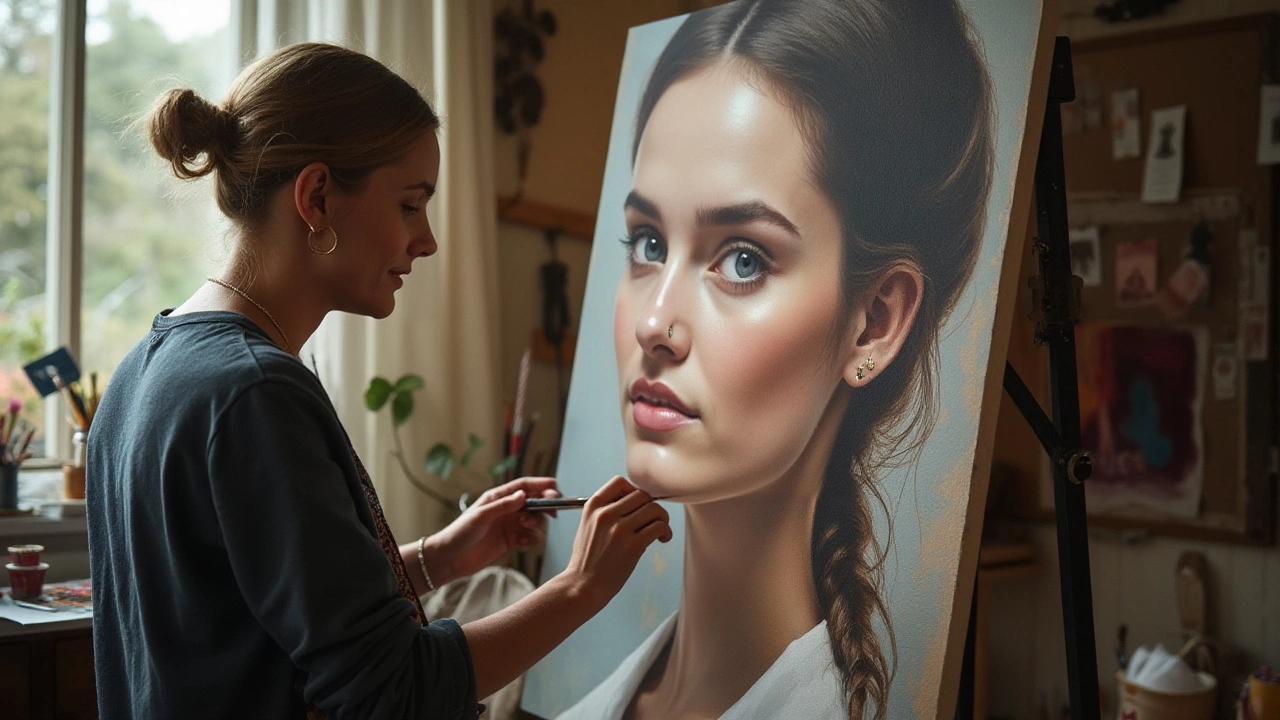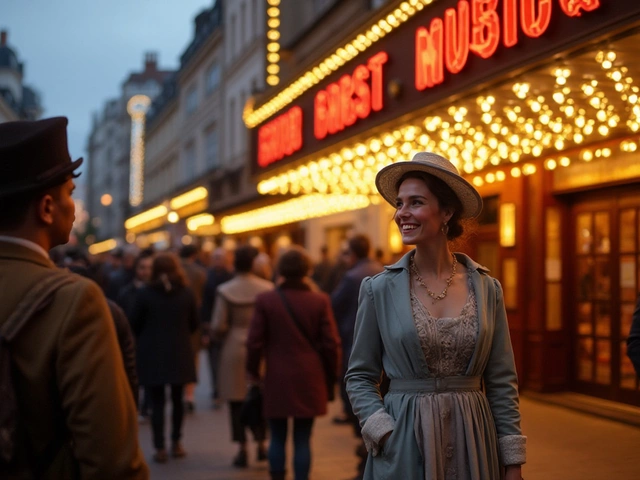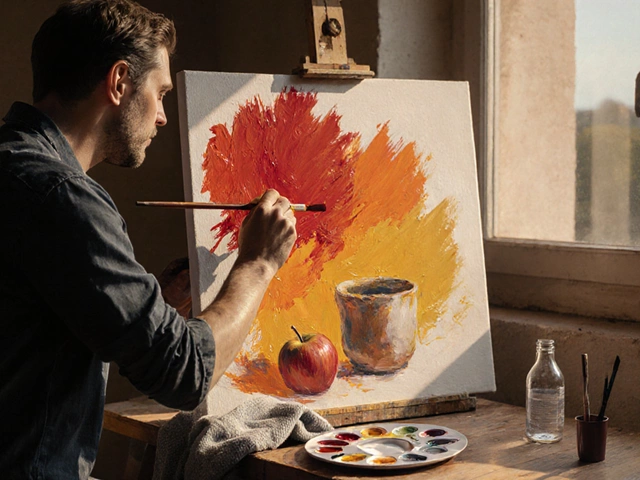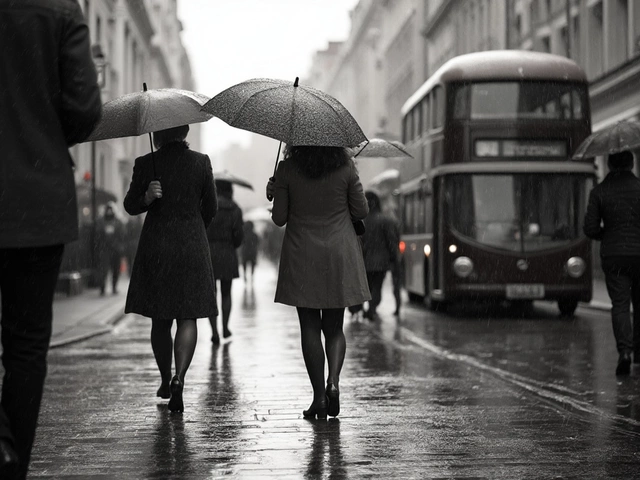Portrait painting carries a legacy of capturing the essence of humanity, with realism playing a pivotal role in depicting subjects with striking accuracy. Unlike abstract or impressionistic approaches, realism seeks to mirror life, focusing on clarity and detail.
For centuries, artists have honed techniques to portray human features convincingly, bringing subjects to life on canvas. By understanding the history and employing tried-and-true methods, both budding and seasoned artists can achieve compelling results.
- The Essence of Realism in Portrait Painting
- Historical Context and Evolution
- Techniques for True-to-Life Representation
- Notable Realistic Portrait Artists
- Tips for Aspiring Realism Painters
The Essence of Realism in Portrait Painting
The art of portrait painting has long sought to capture not just the appearance, but the soul of the subject. Within this pursuit, the realism movement stands out, committed to rendering life with authenticity. The roots of realistic portrait painting delve deep into history, where artists yearned to replicate the visual truth around them. Unlike styles that prioritize emotional expression over form, realism centers on meticulous observation of details—skin texture, light play on the face, and the subtleties of expressions. A realistically painted portrait communicates more than an image; it narrates an unspoken story, revealing insights into the subject's context and character.
Realism, as an art form, gained tremendous momentum during the Renaissance. Painters like Leonardo da Vinci and Albrecht Dürer began employing scientific methods, using geometric proportions and studying anatomy to enhance the precision of their portraits. The movement evolved significantly in the 19th century with artists like Gustave Courbet championing a philosophy that art should portray real life without embellishment. Realists believed that capturing the world as it is, with all its imperfections, held deeper artistic merit and truth. By depicting everyday people and scenes, these artists prompted viewers to see beauty in reality, a key tenet that remains influential.
Depicting life accurately in portrait painting entails utilizing various techniques, such as precise line work, attentive shading, and color accuracy to mimic real textures. Artists often rely on life studies, spending hours observing live models to understand the nuances of muscle movements and skin tones. For instance, in painting a realistic portrait, an artist must consider how natural light falls on the subject and how shadows crisscross the person's face. Such observations lend a dynamic quality to the work, bringing it closer to life. The goal is not merely to reproduce an image, but to convey the essence of the person, a challenge that requires both technical skill and emotional insight.
The power of realism in portraits lies not only in technique but also in the artist's capacity to capture the evanescent moments of life. This approach can transform a simple glance or smile into an evocative expression that resonates with audiences. Every brushstroke becomes a narrative detail, and the painter's challenge is to align technical accuracy with emotion, a balanced fusion that breathes life into the canvas. The striking capability of realism is often best described by American painter Andrew Wyeth when he said,
"I prefer winter and fall, when you feel the bone structure in the landscape – the loneliness of it – the dead feeling of winter. Something waits beneath it – the whole story doesn't show.", his words mirroring realism's quest to unveil hidden truths.
Historical Context and Evolution
The journey of realism in portrait painting is a fascinating exploration of human curiosity about capturing the real. This artistic endeavor finds its roots in ancient civilizations, such as Egypt and Greece, where artists strove to channel the authenticity of their subjects through detailed and precise form. Despite limited resources, these artists demonstrated a notable understanding of human anatomy and proportion, leaving behind mosaics and sculptures that resonate with lifelike essence even today.
Moving through time, the Middle Ages marked a shift as art became less realistic, with a focus turning towards religious symbolism and mysticism. Portraiture during this time was often more about representing spiritual ideals rather than physical likeness. However, by the time the Renaissance rolled around in the 14th century, there was a resurgence of interest in nature and everyday life, spurred on by humanism. Artists like Leonardo da Vinci and Albrecht Dürer led the return to realism, employing emerging techniques such as linear perspective and chiaroscuro to enhance depth and realism in their works. "Art is never finished, only abandoned," da Vinci famously said, reflecting his relentless pursuit of realism combined with artistic interpretation.
As the centuries progressed, realism continued to evolve and transform. Notably, in the 19th century, a wave known as Realism emerged in response to the earlier Romanticism's emotionalism and drama. This new realism insisted on an unvarnished portrayal of the world, often depicting the struggles of ordinary life and social issues of the time. Artists like Gustave Courbet deviated from idealized depictions, opting instead for the raw and gritty truths of everyday existence. Courbet's declaration, "I cannot paint an angel because I have never seen one," captured the essence of this era's artistic philosophy.
In the modern era, realism in portrait painting remained significant, influencing various offshoots such as photorealism and hyperrealism. These styles pushed the boundaries of realism further, with artists meticulously crafting artworks that are nearly indistinguishable from photographs. Through evolving techniques and changing contexts, the pursuit of portraying life as it is—complete with all its imperfections and beauty—continues to captivate artists and audiences alike.

Techniques for True-to-Life Representation
Realism in portrait painting isn't just about replicating a face on canvas; it involves capturing the soul and essence of the subject with precision and empathy. Every brush stroke tells a story; every shade of color serves to reveal the depth of character. To achieve realism, artists often begin by meticulously studying human anatomy. Understanding the skeletal structure, muscle placements, and how light plays on surfaces is fundamental. This anatomical knowledge allows painters to create more believable portraits that truly represent the person depicted.
One cannot discuss realism without mentioning the significance of color theory. Realist painters take great care in selecting colors to accurately reflect skin tones, lighting conditions, and textures. By subtly mixing primary colors, artists create a palette that breathes life into their subjects. The use of glazing techniques, where thin layers of translucent paint are applied over an opaque layer, allows for depth and luminosity that mirrors reality. Delicate attention to these techniques helps maintain the vibrancy and true colors seen in everyday life.
Contrasts play a crucial role as well. Strong understanding of chiaroscuro, which is the effect of light hitting surfaces, helps bring out the volume and shape of a face. Realism portrays the full range of lights and darks that actually appear on the skin, creating a 3D illusion on a flat surface. Utilizing these skills, artists aim to decipher the personality etched in every wrinkle and smile of their subject. It is in these details where true-to-life art finds its power. Famous artist John Singer Sargent acknowledged,
“Every time I paint a portrait, I lose a friend.”implying that capturing authenticity requires genuine connection and understanding of the subject.
Tools like fine brushes, palette knives, and quality pigments are indispensable in this quest for realism. The control offered by small brushes allows for the precision required in detailing facial features – the eyes, lips, and even fine hairs. Realist artists adhere to an iterative process, layering until the desired effect is achieved. In this pursuit, patience is not just a virtue but a necessity. Many spend hundreds of hours on a single piece, constantly adjusting subtle aspects until the painting resembles not just the face but the aura of the individual.
For artists aiming to improve their real-life representation skills, the practice of painting from life rather than photographs can be incredibly beneficial. The dimensions and dynamics of a live model provide a richer understanding of natural lighting and perspective. Engaging with the subject adds an emotional depth that poses itself as priceless in realism. Through a combination of these time-tested techniques and a passion for capturing life authentically on canvas, artists can produce portraits that are more than just visually accurate—they become windows into the subject's soul.
Notable Realistic Portrait Artists
Realism in portrait painting has seen numerous artists who dedicated their lives to portraying human features with entrancing accuracy. Among these, the name John Singer Sargent emerges prominently. An American expatriate, Sargent's masterful brushwork translated his subjects' personalities onto canvas, capturing fleeting human expressions and intricate fabrics with unparalleled expertise. He remains a beacon for aspiring realism painters due to his effortless merging of realism and impressionism, breathing life into every face he depicted.
Francisco Goya from Spain also carved a niche in realism, especially with his incredible ability to blend mundane detail with drama. His portraits of the Spanish royal family were so vivid they almost seemed to speak, reflecting both the grandeur and flaws of his subjects. Goya's use of shadows and highlights was revolutionary at the time, setting a new standard for future artists striving for lifelike depictions.
In the realm of contemporary true-to-life art, Chuck Close stands out significantly. Despite an immobilizing spinal artery collapse, Close's ability to create gigantic portraits layer by minute layer demonstrates both technical genius and a profound dedication to realism. His work often tackles the nuances of human skin texture and emotional depth, using a grid-based method that ensures accuracy and depth.
“The ‘Realism’ is not a technique to me. It’s what I want to show the world.”
Leonardo da Vinci needs no introduction when discussing notable artists within the realism space. Though known for his versatility in various art forms, his portraits, including the iconic Mona Lisa, showcase his dedication to the principles of realistic portraiture. Da Vinci’s detailed anatomical studies informed his artwork, allowing an exceptional portrayal of musculature and expression, skills that are revered within the realism community to this day.
To fully appreciate the achievements of these artists, consider their willingness to explore and refine their techniques over years, often inspired by other fields such as anatomy, mathematics, and even emerging technologies. Bringing portrait painting to life with such precision is no small feat, and their contribution continues to inspire countless artists around the world to pursue realism with fervor.
These artists, through every stroke of their brush, took the complex dance of light and shadow and applied it to the human form. It was their attention to detail and an unyielding commitment to the truth of their subjects that solidified their places in art history. Their legacy serves as a testament to the power of art to capture reality just as it unfolds before us.
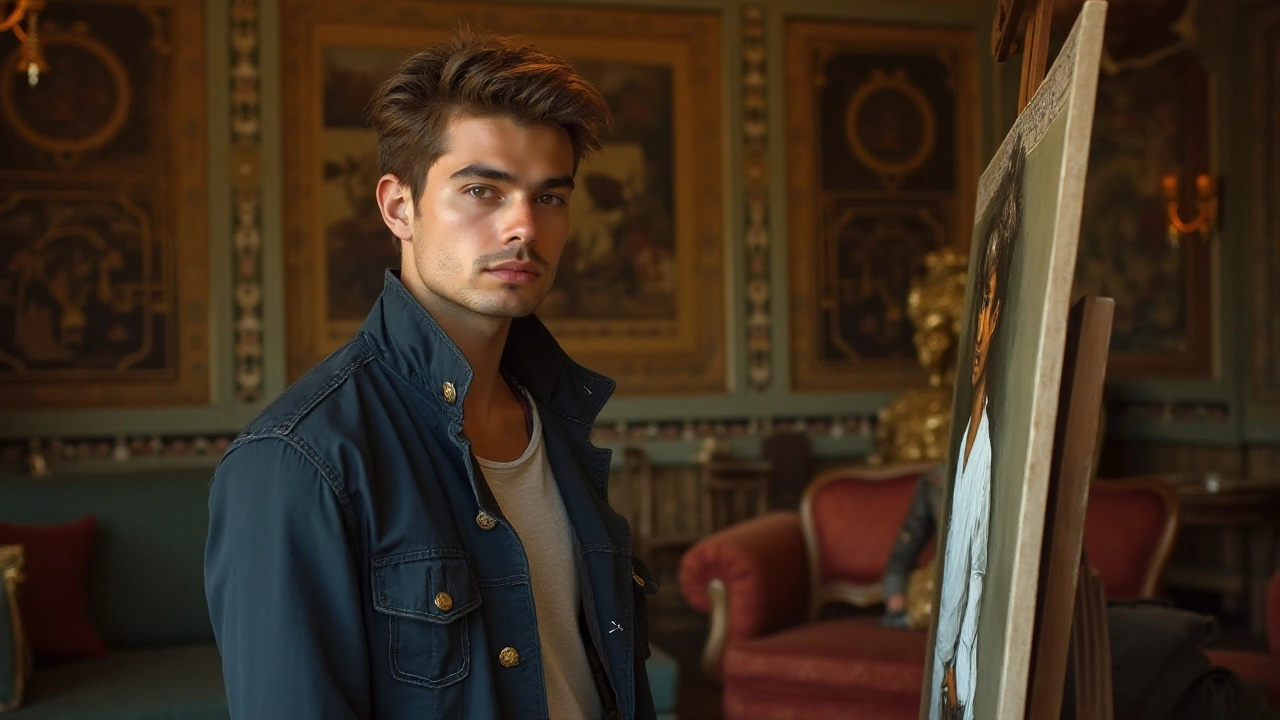
Tips for Aspiring Realism Painters
Embarking on the journey towards mastering realism in portrait painting can be exhilarating yet challenging. The key to capturing life-like representations lies in a foundation built on observation and practice. Start by deeply examining your subjects; the human face is a tapestry rich with intricate details. Notice how light casts shadows and creates depth, and how veins subtly peek through the skin. To harness these subtleties, begin with sketching sessions, emphasizing both strength and delicacy in your line work.
When it comes to painting techniques, layering is indispensable. Build your colors with thin layers to create depth and volume, mimicking the structure of real life. Choose a limited palette to maintain harmony across the canvas, gradually introducing additional hues to enrich your work. Pay attention to textures, from the coarseness of hair to the smoothness of a cheek. Engaging in exercises that focus on these textures can vastly improve your ability to replicate them. Attend workshops and observe established artists; many are more than willing to share their knowledge and experiences.
John Singer Sargent once remarked, "Every time I paint a portrait I lose a friend." It's a facetious nod to the complexities of the subject but highlights the intimate interaction between artist and subject.Dedication to your craft involves a blend of technical skill and emotional resonance. Engaging emotionally with your subject allows you to transcend mere accuracy, offering viewers a glimpse into the soul behind the visage. This connection often translates into more profoundly impactful artworks.
Critique is an oar in the waters of artistry—paddle with it. Seek feedback from peers and mentors. Understand that every piece, whether successful or flawed, adds value to your journey. As trends evolve, maintain an open mind, allowing for interplay between new methods and traditional techniques. The community within this sphere is vast, and online platforms may offer both inspiration and insight into your progress. Remember, every master was once an apprentice, and realism, with its robust tradition, offers a canvas as vast as your ambition.
